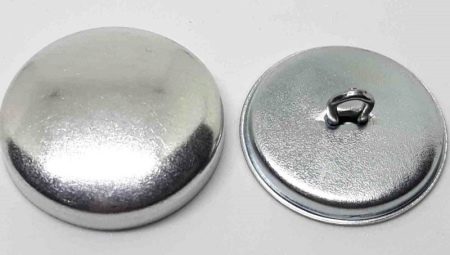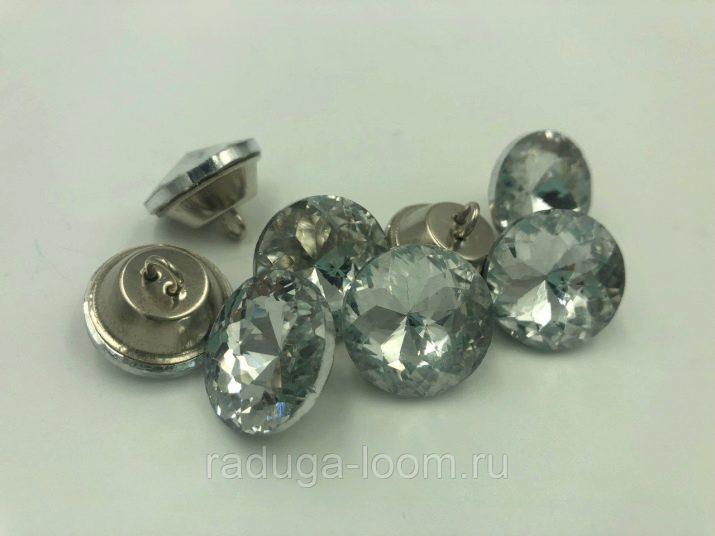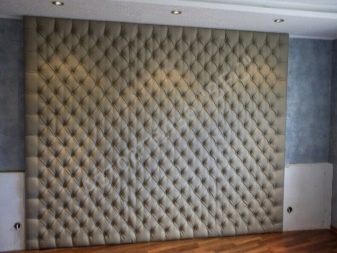All about furniture buttons

They began to decorate furniture several centuries ago, but this design is still relevant today. To make the upholstery attract attention, choose the appropriate material (velor, leather, velvet, other modern upholstery fabrics), and to give this design a mesmerizing look, use furniture buttons.
From the article, you will learn about the features of such elements, how they differ from traditional buttons for clothes, and how to make them yourself.


Peculiarities
There are three types of blanks for furniture buttons:
- with a diameter of 12 mm;
- with a diameter of 18 cm;
- with a diameter of 21 mm.

The numbers of decorative buttons for making furniture correspond to the same numbers. But depending on how thick the covered base (leather or fabric), the diameter may change. The production blanks are made of half-millimeter steel sheet and wire hooks (acting as loops) no more than one and a half millimeters thick.

This design has increased resistance to stress, which distinguishes this type of tight-fitting buttons from the usual (aluminum and plastic, as well as rhinestones and crystals), which are intended for clothing. Therefore, furniture pieces can be easily covered with a dense fabric for upholstery or a leather base.
Such specimens are perfect where a strong stretch is needed to create relief on the upholstery of soft sofas, corners and other products. The number (or diameter) of the buttons is selected depending on the density of the upholstery material.

The cup of furniture pieces is 1 mm less than the tight-fitting options for clothes.
It is better to sew on furniture buttons with a pneumatic pistol - this will significantly reduce the operating time and, in general, facilitate the task of fastening them.
Manufacturing
To make furniture buttons with your own hands, you need factory blanks (steel plates and wire eyelets), upholstery material and a press, for example, with a punch nozzle. Then proceed as follows:
- circles are cut out of fabric, leather or other material with a diameter larger than the steel blank, by about 8-10 mm;
- the fabric blank is placed clearly on the center of the nozzle;
- then you need to insert the guide part of the mechanism (steel round), slightly press down with a press;
- then it is better to tuck the material inside the nozzle with your hands or with an improvised suitable object;
- now the punch nozzle is turned over and the second workpiece (loop) is placed on the structure, strongly pressed with the handle of the press for the final collection of the button.


The installation itself for the manufacture of such products must be securely fixed on the tabletop.
Large size furniture buttons can also be made from blanks for clothing varieties.
In this case, they will perform only a decorative function, they will not withstand tightening, since their base is made of plastic or stamped aluminum.

Usage ideas
Furniture buttons are used to cover new upholstered furniture, to stretch old sofas and armchairs. Decorative pieces can decorate any upholstery. One of the oldest decorating methods in the furniture industry is called the carriage coupler.
The name came from the 18th century, when they began to decorate carriages in this way. Today it is used not only in furniture production, but also in the design of wall panels both in residential premises and in non-residential premises. For example, capitonné (the second name for the coach tie) can often be seen in clubs and restaurants.


Such a tie (diamond-shaped or square) is easy to make with your own hands, and to give the capitonné a mesmerizing look, furniture buttons are used to form folds (sometimes they are replaced with crystals, even LEDs and other luxury elements for an overflow effect).
Capitonné features characteristic folds, and the furniture buttons help to secure the material and emphasize the effect of such a tie. In this way, for example, you can arrange the space at the headboard in the bedroom.


From furniture buttons - in combination with items for clothes of various sizes - they make panels on the wall. All elements that match the color are sewn onto a dense fabric, which is pulled over a plywood or cardboard sheet (the cardboard should be as dense as possible).


From colored buttons of various textures and different sizes, you can lay out some kind of figure or pattern (for example, create a button apple). If you just scatter them and fix them in a chaotic manner, you can also get a creative corner on the wall.







